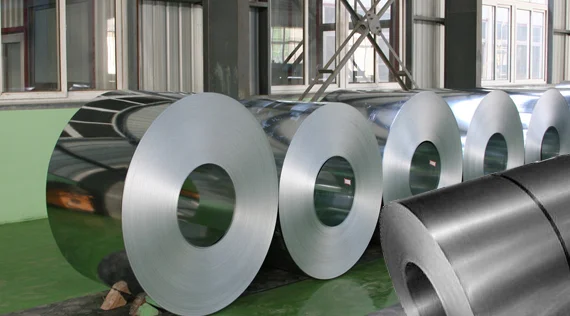Why iron-ore prices are on track to suffer their largest monthly loss on record
Metal Prices | 2021-08-20 10:51:12
Iron-ore prices touched record highs this year, but look to suffer their biggest monthly loss ever as China’s curbs on carbon emissions include limits on the output of steel, hurting demand for the raw material used to produce it.
Iron-ore prices touched record highs this year, but look to suffer their biggest monthly loss ever as China’s curbs on carbon emissions include limits on the output of steel, hurting demand for the raw material used to produce it.
“The market is not short iron ore, but short in terms of consumption as steel mills have their hands tied in a market where global steel demand is healthy and yet mills find themselves unable to produce,” says Rhys Pittam, head of ferrous operations at Marex.
The pessimism in the market is “China-led,” as the nation is the biggest producer of steel products and consumer of iron ore, he says. China announced crude-steel production restrictions this year as it aims to reduce carbon emissions.
At $148.99 per metric ton on Aug. 17, the CME August futures contract TIOQ21, -2.44% for 62% iron-ore fines delivered to China traded around 30% lower month to date, on track for the largest monthly percentage decline based on data going back to 2010, according to Dow Jones Market Data. Futures prices have dropped 32% from the July 16 record of $219.77 per metric ton.
The price plunge was mainly caused by the stricter Chinese steel production cuts in the second half of the year, and steel demand weakened on the back of hot weather and rainfall in China, as well as the rise in Covid-19 cases, says Niki Wang, managing editor, pricing, iron ore and steel, at S&P Global Platts. At $160.85 per dry metric ton on Aug. 13, the benchmark S&P Global Platts IODEX, the spot price of 62% iron- fines delivered to China, was down 12% this month.
The World Steel Association pegged China’s June steel production at 93.9 metric tons, down 5.6% from May.
China also pledged to cut steel production to cap input costs of raw materials, like iron ore, says Sanjeeban Sarkar, commodities editor at the Economist Intelligence Unit (EIU).
High demand kept iron-ore prices from plummeting, but they may have “passed their peak” and may continue to ease in the second half of this year as Chinese steel production falls compared with 2020, he says.
Aside from steel production cuts, China also changed export taxes in May and July, “reducing incentives to produce for international markets,” analysts at BofA Securities wrote in a recent note. China reportedly canceled export tax rebates on some steel products in May and raised export tariffs on a crude form of iron in July.
“Renewed stimulus in China, some restocking ahead of the winter Olympics, which might prompt further mill closures to contain emissions, and the prioritization of value over volume by iron ore miners,” could cause iron-ore prices to turn higher again, the BofA analysts said. There is “scope for prices to stabilize, but volatility may remain high.”
The Covid delta variant’s spread, meanwhile, weighs heavy on the outlook.
The possibility of new lockdowns poses significant threats to industrial activity, the spread of the variant in Latin America could hurt mine production, and China lockdowns could slow steel production and pressure iron-ore prices, says the EIU’s Sarkar.
U.S. and China infrastructure plans could boost iron-ore demand as steel demand climbs, he says.
The EIU expects 2021 hot-rolled coil steel prices, on a free-on-board China basis—which pertains to shipping and liability, which impact costs—to average $793 per metric ton, up nearly 63% from 2020. It also sees iron ore averaging about $185 per metric ton this year and $155 in 2022 to 2023.
Marex is bearish on iron-ore demand for the second half of this year because of China’s steel restrictions and increased supply, says Pittam.
Iron ore faces “strong headwinds given China’s interest to go ‘greener’,” he says, adding that China looks to introduce ferrous scrap futures on the Dalian Commodities Exchange and work with steel mills to encourage more production using scrap.
 By
By 